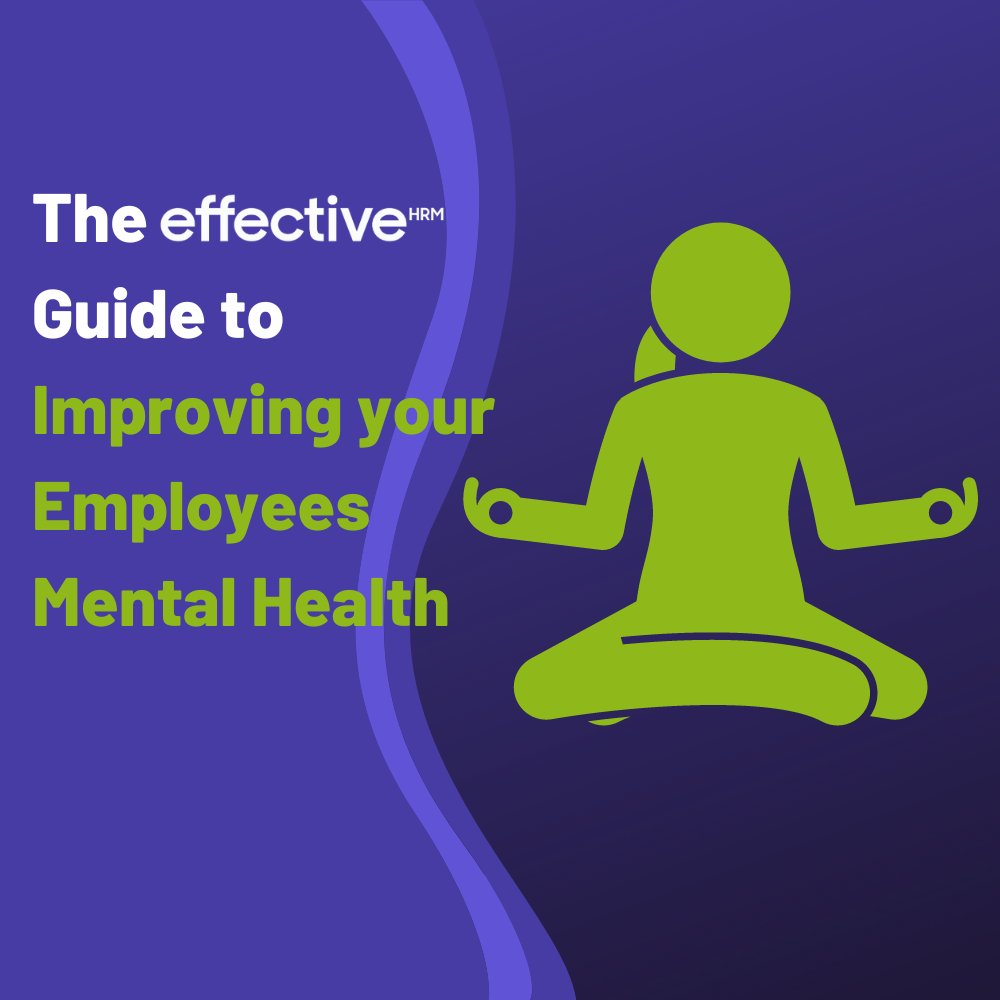Improving Productivity Through Effective Mental Health Policies

Table of Contents
The Business Case for Investing in Mental Health
Investing in employee mental health is not just ethically sound; it's a smart business decision. A robust approach to mental wellbeing translates directly into a healthier bottom line.
Reduced Absenteeism and Presenteeism
Mental health issues are a leading cause of both absenteeism (days off work) and presenteeism (reduced productivity while at work). Employees struggling with anxiety, depression, or burnout often experience decreased concentration, difficulty completing tasks, and increased errors.
- Presenteeism examples: Missed deadlines, reduced output, increased errors, difficulty focusing, decreased engagement in team activities.
- According to a study by the American Psychological Association, presenteeism costs U.S. businesses an estimated $150 billion to $500 billion annually. The cost of absenteeism is equally significant, with lost productivity adding to already substantial healthcare costs.
Improved Employee Engagement and Morale
Supportive mental health policies foster a positive and inclusive work environment, leading to increased employee engagement and morale. When employees feel valued and supported, they are more likely to be motivated, productive, and committed to their work.
- Engagement initiatives: Employee Assistance Programs (EAPs), flexible work arrangements, mental health awareness training, open communication channels, employee resource groups (ERGs) focused on mental wellbeing.
- Studies consistently show a strong correlation between engaged employees and higher productivity, improved customer satisfaction, and reduced turnover.
Enhanced Creativity and Innovation
A healthy work environment, free from the debilitating effects of chronic stress and anxiety, fosters creativity and enhances problem-solving skills. When employees feel safe and supported, they are more likely to take risks, think outside the box, and contribute innovative ideas.
- Stress reduction techniques: Mindfulness programs, yoga sessions, meditation apps, access to quiet spaces for reflection.
- Research suggests that reducing workplace stress can lead to a significant improvement in cognitive function, creativity, and overall performance.
Key Components of Effective Mental Health Policies
Implementing effective mental health policies requires a multifaceted approach that addresses various aspects of employee wellbeing.
Accessible Employee Assistance Programs (EAPs)
Readily available and confidential EAPs are crucial for providing employees with access to professional support. These programs offer a range of services, including counseling, stress management workshops, and referrals to specialized mental health professionals.
- Successful EAP features: Multiple access points (phone, online, in-person), diverse provider networks, proactive outreach and education, integration with other employee benefits.
- Effective communication is essential to ensure employees are aware of the EAP and comfortable utilizing its services.
Comprehensive Mental Health Benefits
Robust insurance coverage for mental healthcare is essential. This includes coverage for therapy, medication management, and hospitalization when necessary. Parity between mental and physical health benefits is critical.
- Inclusive benefits: Coverage for various mental health conditions, telehealth options, access to specialists (psychiatrists, psychologists), preventative care programs.
- Ensuring parity sends a clear message that mental health is valued and treated with the same importance as physical health.
Fostering a Supportive and Inclusive Workplace Culture
Creating a culture of open communication, empathy, and understanding is paramount. Reducing stigma around mental health and encouraging help-seeking behavior requires a concerted effort from leadership and all employees.
- Promoting open communication: Manager training on mental health awareness, creating safe spaces for employees to share their experiences, establishing clear channels for reporting concerns.
- Creating an inclusive environment: Flexible work arrangements, reasonable accommodations for employees with mental health conditions, promoting diversity and inclusion initiatives.
Measuring the Success of Mental Health Policies
Regularly measuring the effectiveness of mental health initiatives is crucial for continuous improvement. Key performance indicators (KPIs) provide valuable insights into the impact of these programs.
Key Performance Indicators (KPIs)
Tracking several metrics helps determine the success of mental health policies.
- Examples of KPIs: Employee satisfaction surveys, absenteeism rates, presenteeism metrics (self-reported or observed), employee feedback, utilization rates of EAPs and other mental health resources, turnover rates.
- Regular data analysis helps identify areas for improvement and ensures that resources are allocated effectively.
Continuous Improvement and Evaluation
Mental health policies are not static; they require ongoing review and refinement. Regular evaluation, based on data and employee feedback, is essential for optimizing their effectiveness.
- Feedback gathering methods: Employee surveys, focus groups, regular check-ins with managers, feedback mechanisms through HR or internal communication channels.
- Leadership plays a crucial role in fostering a culture of continuous improvement and demonstrating commitment to employee wellbeing.
Conclusion
Effective mental health policies are not merely a cost; they are a strategic investment that delivers a significant return on investment (ROI). By reducing absenteeism, boosting employee engagement, and fostering a culture of wellbeing, organizations can unlock the full potential of their workforce and significantly improve productivity. Invest in your employees' mental health and unlock the potential for increased productivity. Implement effective mental health policies today to boost your bottom line. Learn more about creating a thriving workplace by prioritizing employee mental health. [Link to relevant resources].

Featured Posts
-
 Belgium Vs England Football Match Tv Channel Kick Off Time And Live Streaming Guide
May 03, 2025
Belgium Vs England Football Match Tv Channel Kick Off Time And Live Streaming Guide
May 03, 2025 -
 Visionner La Matinale Avec Mathieu Spinosi Et Son Violon
May 03, 2025
Visionner La Matinale Avec Mathieu Spinosi Et Son Violon
May 03, 2025 -
 Severe Winter Weather Alert Four Or More Inches Of Snow Freezing Temperatures Expected Tuesday
May 03, 2025
Severe Winter Weather Alert Four Or More Inches Of Snow Freezing Temperatures Expected Tuesday
May 03, 2025 -
 Indias Pm Modi To Discuss Ai And Economy During France Trip
May 03, 2025
Indias Pm Modi To Discuss Ai And Economy During France Trip
May 03, 2025 -
 A Bitter Row Shakes Reform Uk Understanding The Conflict
May 03, 2025
A Bitter Row Shakes Reform Uk Understanding The Conflict
May 03, 2025
